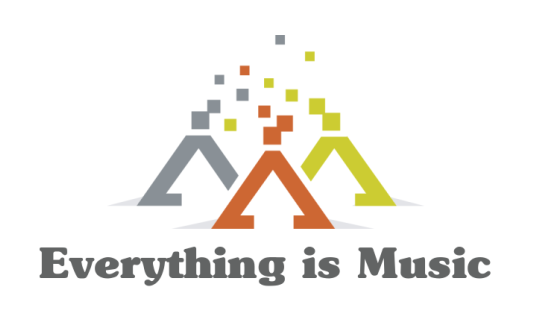
A Complete Guide to Sales Productivity Tools
Welcome to the complete guide to sales productivity tools, where we explore the power of phone queue management and its impact on boosting sales efficiency. Discover how utilizing the right tools can streamline your sales processes, enhance customer interactions, and maximize productivity. Let’s dive in!
Types of Sales Productivity Tools
CRM Software
Customer Relationship Management (CRM) software is a cornerstone tool for sales productivity. It centralizes customer data, tracks interactions, and helps manage leads and opportunities. CRM software enables sales teams to prioritize their activities, personalize their approach, and build stronger customer relationships. Popular CRM software includes Salesforce, HubSpot CRM, and Zoho CRM.
Sales Analytics Tools
Sales analytics tools provide valuable insights into sales performance, pipeline management, and forecasting. These tools leverage data analytics and visualization to identify trends, track key metrics, and optimize sales strategies. Sales analytics tools such as InsightSquared, Tableau CRM, and Gong.io empower sales teams with data-driven decision-making capabilities.
Email Tracking and Automation Tools
Email tracking and automation tools streamline the sales communication process. They enable sales professionals to track email opens, link clicks, and engagement metrics, allowing for more targeted follow-ups. Additionally, automation features automate repetitive email tasks, such as sending personalized follow-up sequences. Well-known email tracking and automation tools include Outreach, SalesLoft, and Yesware.
Sales Enablement Tools
Sales enablement tools empower sales teams with the resources and content they need to engage prospects and close deals. These tools provide easy access to sales collateral, training materials, and playbooks, ensuring that sales reps have the right information at their fingertips. Sales enablement tools like Seismic, Highspot, and Showpad enhance sales efficiency and effectiveness.
Communication and Collaboration Tools
Effective communication and collaboration are crucial for successful sales teams. Communication and collaboration tools facilitate real-time messaging, video conferencing, and document sharing, allowing sales professionals to work together seamlessly. Tools such as Slack, Microsoft Teams, and Google Workspace promote collaboration, enhance team dynamics, and improve overall productivity.
Benefits of Using Sales Productivity Tools
Using sales productivity tools offers numerous benefits for sales teams. Let’s explore some of the key advantages:
Sales productivity tools offer numerous benefits for sales teams, empowering them to achieve better results and maximize efficiency. Let’s explore some of the key advantages of using these tools:
| Benefits | Description |
| Streamlined Sales Processes | Sales productivity tools automate repetitive tasks, such as data entry, follow-ups, and report generation, freeing up valuable time for sales reps. By streamlining these processes, sales professionals can focus on revenue-generating activities, such as prospecting and building relationships. |
| Improved Lead Management | Sales productivity tools enable effective lead management, ensuring that leads are efficiently nurtured throughout the sales cycle. With these tools, sales teams can track lead interactions, prioritize follow-ups, and gain insights into lead quality, leading to higher conversion rates and increased revenue. |
| Enhanced Customer Relationship Management | CRM software and other sales productivity tools provide a holistic view of customer interactions, allowing sales reps to understand customer needs, preferences, and pain points. This knowledge enables personalized and targeted sales strategies, fostering stronger customer relationships and increasing customer satisfaction. |
| Time-Saving Automation | Automation features in sales productivity tools significantly reduce manual effort and save time for sales professionals. Automated email sequences, task reminders, and data updates eliminate repetitive tasks, enabling sales reps to focus on strategic activities and closing deals. |
| Accurate Sales Analytics and Reporting | Sales analytics tools provide actionable insights into sales performance, helping sales managers and reps make data-driven decisions. By analyzing key metrics, such as conversion rates, pipeline velocity, and win rates, sales teams can identify areas for improvement and optimize their sales strategies. |
These benefits highlight the positive impact that sales productivity tools can have on sales processes, lead management, customer relationships, time management, and decision-making. By leveraging these tools effectively, sales teams can increase productivity, improve efficiency, and drive revenue growth.
Factors to Consider When Choosing Sales Productivity Tools
When selecting sales productivity tools, several factors should be taken into consideration:
▪ Scalability and Integration Capabilities
- Choose tools that can grow and scale with your sales organization. Ensure that the tools can integrate with your existing systems, such as CRM software, marketing automation platforms, and other essential tools.
▪ Ease of Use and User Interface
- Intuitive and user-friendly interfaces are crucial for successful adoption and efficient use of sales productivity tools. Ensure that the tools provide a seamless user experience and require minimal training.
▪ Customization Options
- Look for tools that offer customization options to align with your unique sales processes and workflows. Customizable fields, workflows, and reporting capabilities allow for tailored solutions that meet your specific needs.
▪ Data Security and Privacy
- When dealing with sensitive customer and sales data, it is essential to prioritize data security and privacy. Ensure that the tools adhere to industry-standard security measures and compliance regulations to protect your valuable information.
▪ Pricing and Return on Investment
- Consider the pricing structure of the tools and evaluate the potential return on investment. Look for tools that provide a clear value proposition and align with your budgetary constraints.
Tips for Maximizing the Use of Sales Productivity Tools
To maximize the benefits of sales productivity tools, consider the following tips:
▪ Provide Adequate Training and Support
- Invest in proper training and support to ensure that your sales team understands how to effectively utilize the tools. Continuous education and assistance will help them leverage the tools’ full potential.
▪ Regularly Evaluate and Update Tools
- As technology evolves, new and more advanced sales productivity tools may become available. Regularly assess your existing tools and explore new options to stay ahead of the competition and take advantage of the latest innovations.
▪ Foster Collaboration and Communication
- Encourage collaboration and communication within your sales team by leveraging communication and collaboration tools. Facilitating knowledge sharing and teamwork can lead to better outcomes and improved sales productivity.
▪ Monitor and Analyze Key Metrics
- Regularly track and analyze key sales metrics to gain insights into your team’s performance and identify areas for improvement. Utilize the analytics features of your sales productivity tools to monitor progress and make data-driven decisions.
Sales productivity tools offer significant advantages for sales teams looking to optimize their processes and achieve better results. By utilizing CRM software, sales analytics tools, email tracking and automation tools, sales enablement tools, and communication and collaboration tools, sales professionals can streamline their workflows, improve customer relationships, and drive revenue growth. When choosing these tools, consider factors such as scalability, ease of use, customization options, data security, and pricing. By providing proper training, regularly evaluating tools, fostering collaboration, and monitoring key metrics, sales teams can maximize the benefits of sales productivity tools and achieve higher levels of success.
FAQs
- Are sales productivity tools suitable for small businesses?
Yes, sales productivity tools are beneficial for businesses of all sizes. They can help small businesses streamline their sales processes, enhance lead management, and improve customer relationships.
- Can sales productivity tools replace human sales professionals?
No, sales productivity tools are designed to complement and empower human sales professionals, not replace them. These tools enhance efficiency, provide insights, and automate repetitive tasks, allowing sales reps to focus on building relationships and closing deals.
- How do sales productivity tools contribute to revenue growth?
Sales productivity tools contribute to revenue growth by improving lead management, enhancing customer relationships, streamlining sales processes, and providing accurate analytics and insights. These factors lead to increased conversion rates, improved customer satisfaction, and optimized sales strategies.
- What is the typical cost of sales productivity tools?
The cost of sales productivity tools varies depending on the type of tool, features, and provider. Some tools offer free versions or trial periods, while others have monthly or annual subscription fees. It’s important to evaluate the return on investment and choose tools that align with your budget and business requirements.
- How often should sales productivity tools be evaluated and updated?
Sales productivity tools should be regularly evaluated to ensure they continue to meet the evolving needs of your sales organization. Consider assessing your tools at least once a year or whenever significant changes occur in your business or the sales technology landscape.
